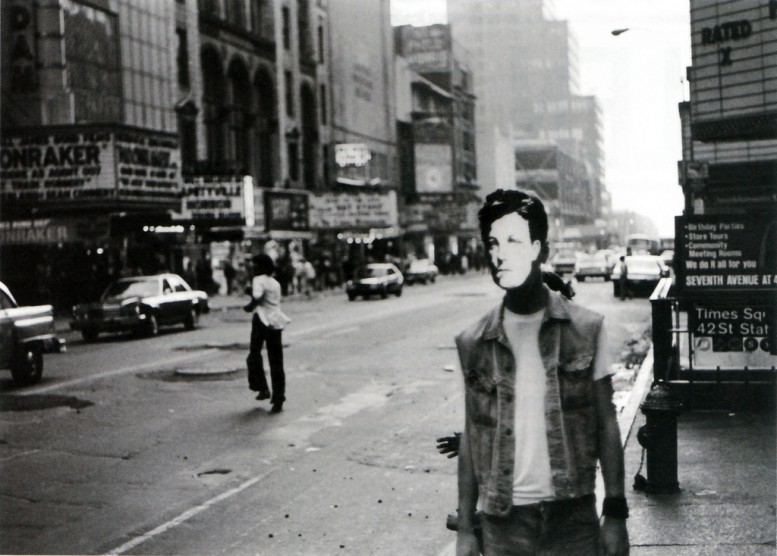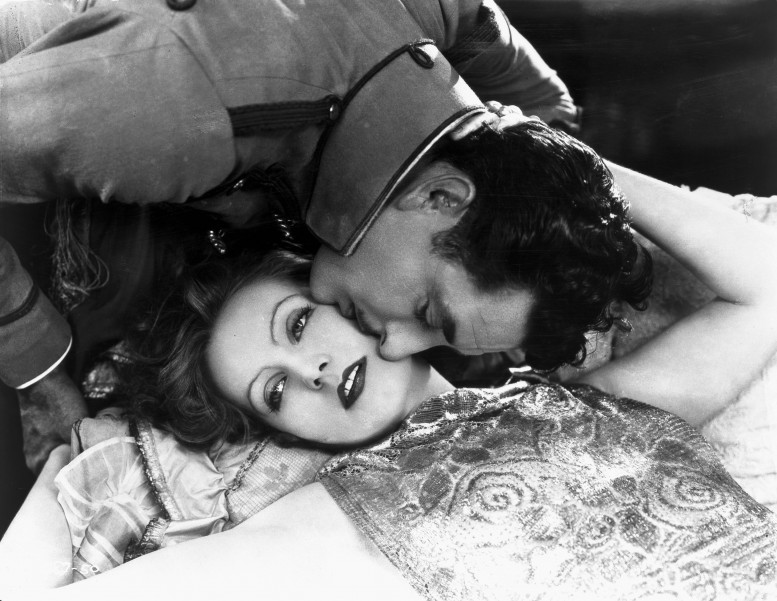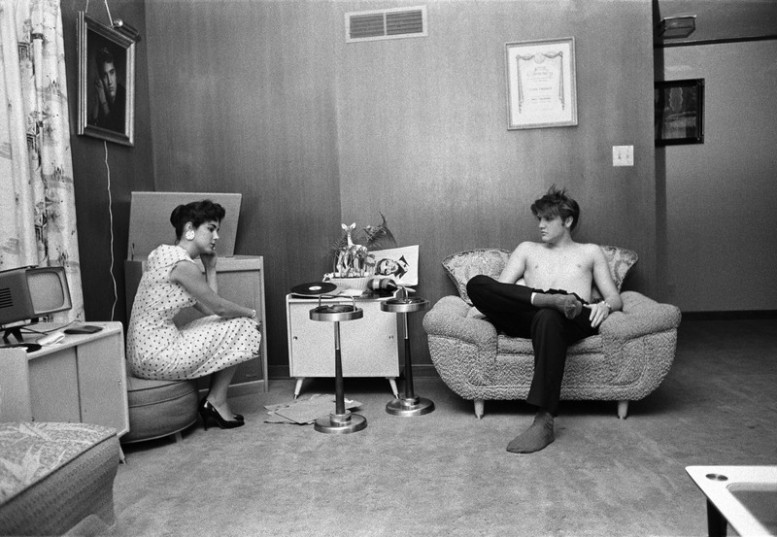Drift by Jenny Saville, 2020-2022 © Jenny Saville, Courtesy Gagosian.
text by Poppy Baring
Before you have time to fully enter Jenny Saville’s The Anatomy of Painting retrospective, you are faced with a colossal painting of the artist and her sister towering over you, not in an oppressive way, however. Hyphen, made in 1999, is mesmerizing and bright. Light pinks dominate the huge canvas, presenting two fresh-faced, marble-eyed young girls. The composition makes for an interesting opening piece. With one face facing towards you as you enter, but with the subject's eyes looking away, the other looks up, meeting visitors with huge open eyes. You are instantly aware of the emotion and intimacy, although her eyes meet yours, her head is occupied and nestled, resting in her sister's neck.
With a few more steps, you are opposite Propped. A painting again made with pink, red, and brown tones that add brightness to works that are seemingly conveying dark emotion. This painting shows a woman perched on a stall, wearing only a pair of silk shoes. The work at first feels overpowering. The strength of her body is apparent, and her face, only slightly visible at the very top of the canvas, looks down at the viewer, but there is also vulnerability in the subject. Her fingertips cling to her thighs, and there is a feeling that her balance is not completely secure. Lopped writing from an essay by the French Feminist, Luce Irigaray reads, “if we continue to speak in this sameness - speak as men have spoken for centuries, we will fail each other.” It is clear that the power of these pieces comes from their vulnerability, as (Luce suggests) is true of women. Saville considers this piece to be her most succinct of her early works. Early indeed, Propped was exhibited in her graduate collection at Glasgow School of Art, which led to Charles Saatchi buying her work and commissioning new works for his gallery in London.
Reverse © Jenny Saville. All rights reserved, DACS 2025. Courtesy Gagosian
Anatomy of Painting is presented, for the most part, in chronological order, showcasing the development of her practice. As you leave the first wing of the show, a timeline of Saville’s career explains her time studying in Glasgow and her fascination with artists of the Italian Renaissance. An inspiration that is clear as you enter the next room, which is full of detailed charcoal and pastel drawings that dance around the room. They are rich and intimate studies showing the bones behind her mountains of painting, but they are indeed beautiful works in their own right. In Pieta 1, Saville is responding to Michelangelo’s marble sculpture of The Deposition, made in the 1500s to depict three figures supporting Christ after the crucifixion. As with many of her works, when you begin to walk away from the drawing, feeling you have analyzed all the different figures consuming the canvas, you are brought back, realizing you have missed a hidden element.
In the final section of the show, visitors enter back into a room full of paintings, this time more colourful than the works that welcomed you. The end of the exhibition feels just like that, a full stop to her exploration of portraiture so far. Through these works, she explains, “ I wanted to see if I could make an almost abstract portrait,” and whether you interpret that in these works or not, they are truly mesmerising, with eyes and lips showing enormous emotion that somehow seem more real and important than the viewer's own.
Hyphen by Jenny Saville, 1999 © Jenny Saville, Courtesy Gagosian.
Jenny Saville: The Anatomy of Painting is on view through the 7th of September at The National Portrait Gallery in London, WC2H 0HE


 , the first biography of a beleaguered art-world figure who became one of the most important voices of his generation. Wojnarowicz emerged from a Dickensian childhood that included orphanages, abusive and absent parents, and a life of hustling on the street. He first found acclaim in New York's East Village, a neighborhood noted in the 1970s and '80s for its abandoned buildings, junkies, and burgeoning art scene. Along with Keith Haring, Nan Goldin, and Jean-Michel Basquiat, Wojnarowicz helped redefine art for the times. As uptown art collectors looked downtown for the next big thing, this community of cultural outsiders was suddenly thrust into the national spotlight. The ensuing culture war, the neighborhood's gentrification, and the AIDS crisis then devastated the East Village scene. Wojnarowicz died of AIDS in 1992 at the age of thirty-seven. Carr's brilliant biography traces the untold story of a controversial and seminal figure at a pivotal moment in American culture. Available
, the first biography of a beleaguered art-world figure who became one of the most important voices of his generation. Wojnarowicz emerged from a Dickensian childhood that included orphanages, abusive and absent parents, and a life of hustling on the street. He first found acclaim in New York's East Village, a neighborhood noted in the 1970s and '80s for its abandoned buildings, junkies, and burgeoning art scene. Along with Keith Haring, Nan Goldin, and Jean-Michel Basquiat, Wojnarowicz helped redefine art for the times. As uptown art collectors looked downtown for the next big thing, this community of cultural outsiders was suddenly thrust into the national spotlight. The ensuing culture war, the neighborhood's gentrification, and the AIDS crisis then devastated the East Village scene. Wojnarowicz died of AIDS in 1992 at the age of thirty-seven. Carr's brilliant biography traces the untold story of a controversial and seminal figure at a pivotal moment in American culture. Available 
 Mick Jagger, 1966. Photograph by Gered Mankowitz
Mick Jagger, 1966. Photograph by Gered Mankowitz
 Alfred Wertheimer, "Elvis and Barbara Hearn."
Alfred Wertheimer, "Elvis and Barbara Hearn."